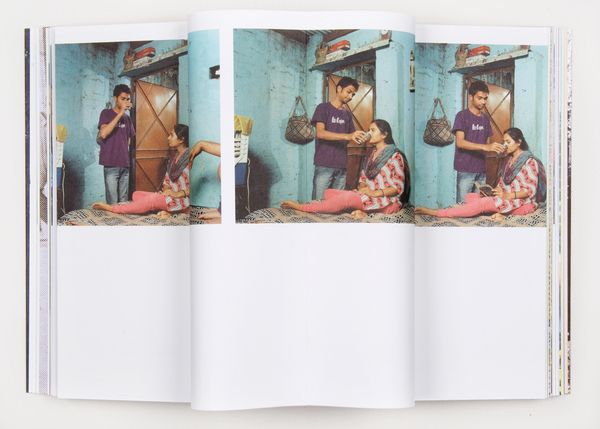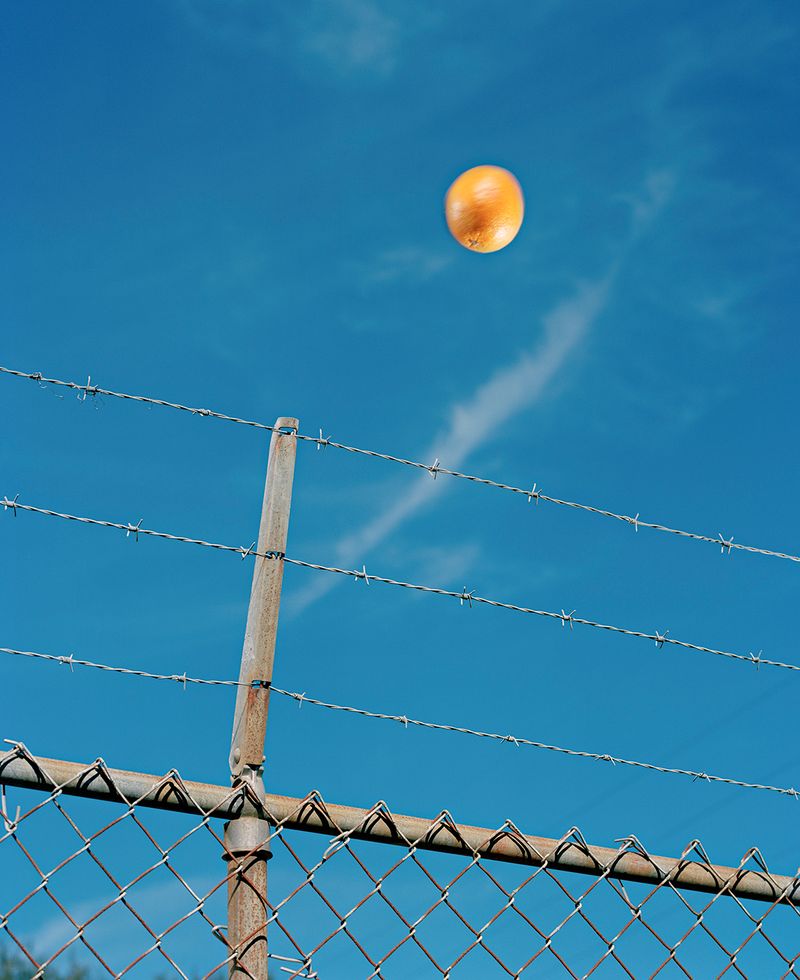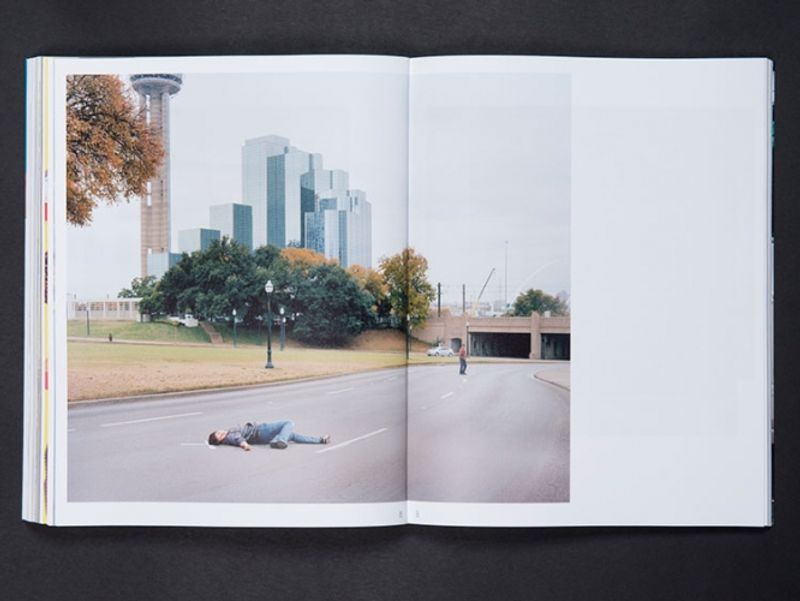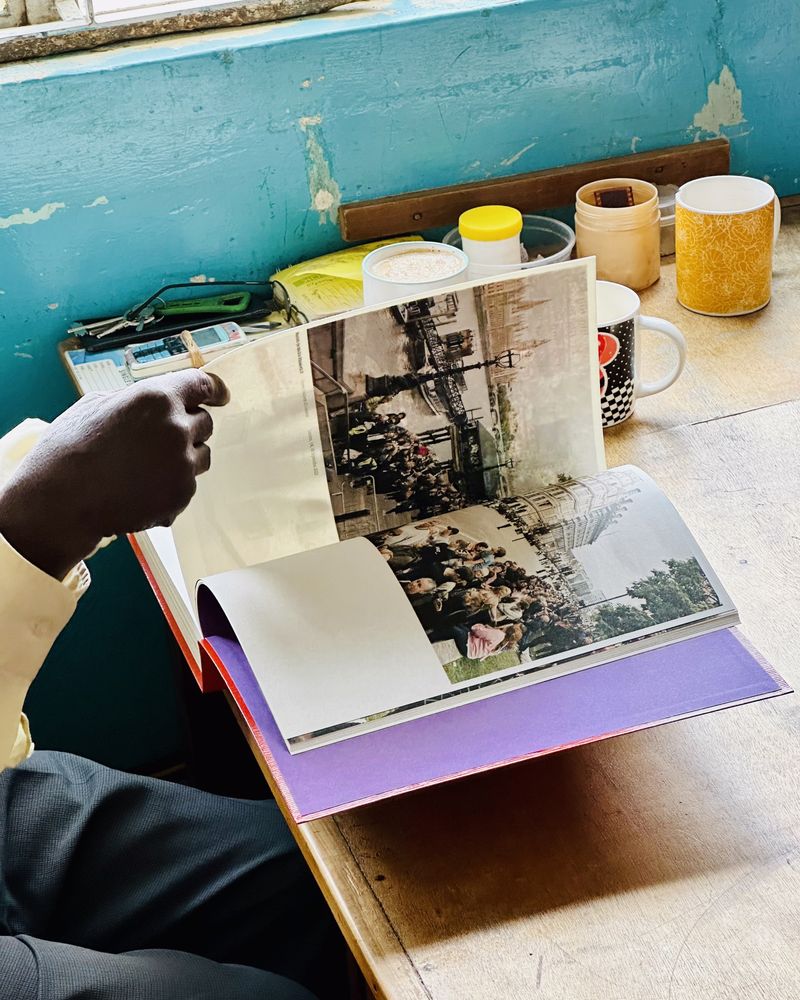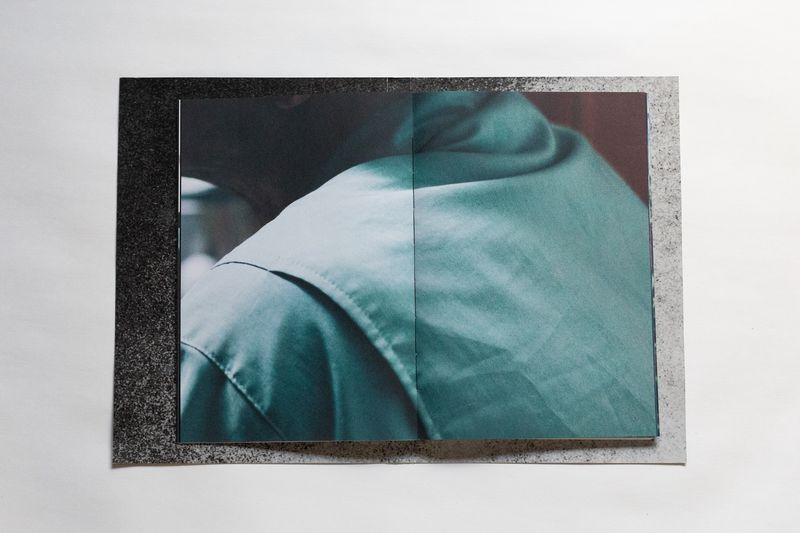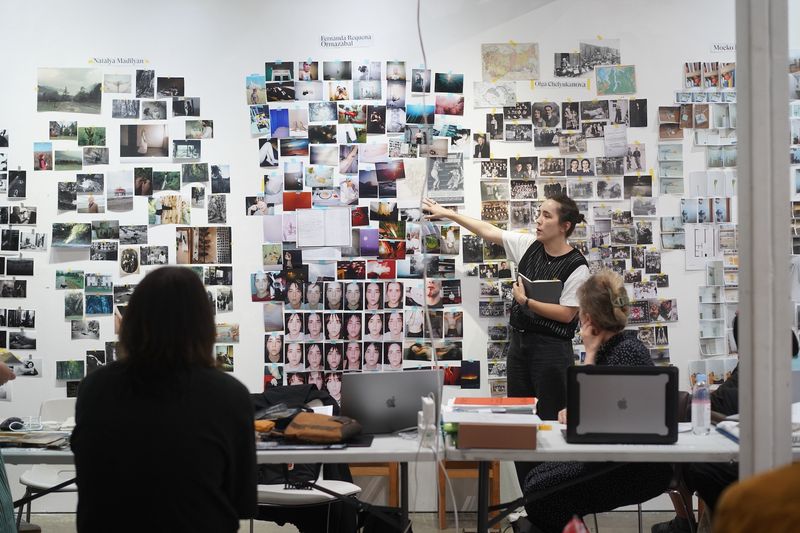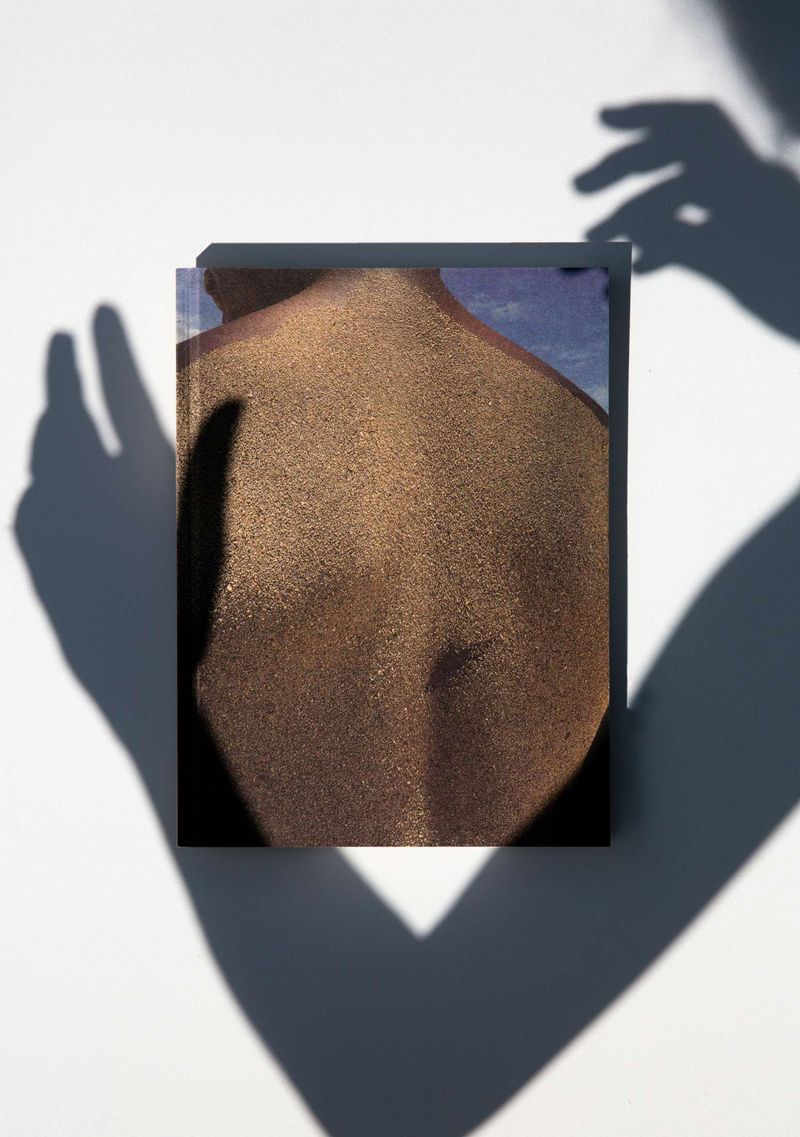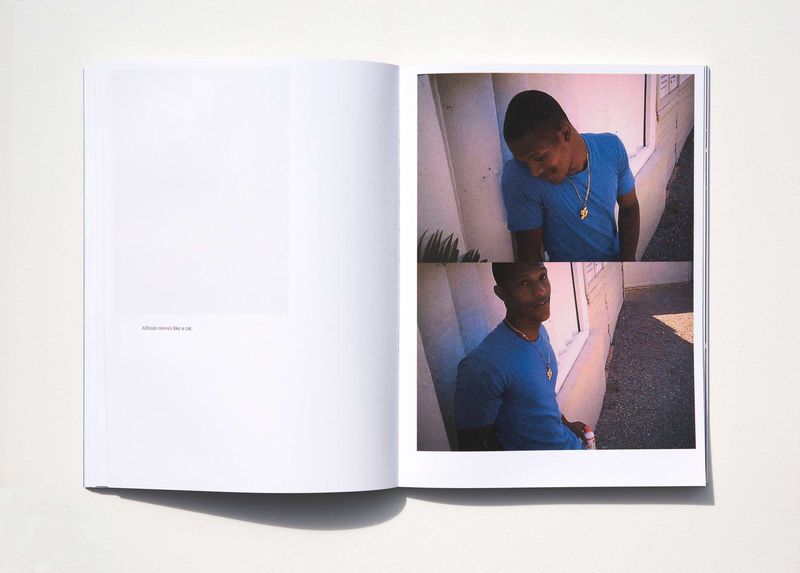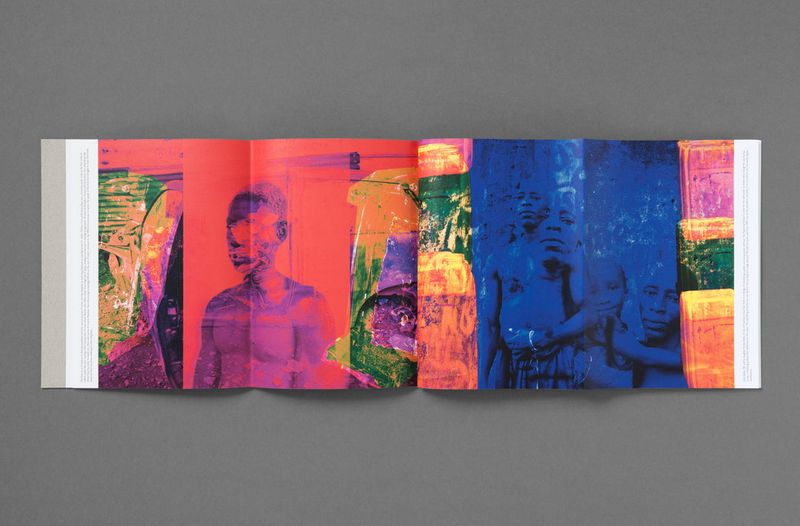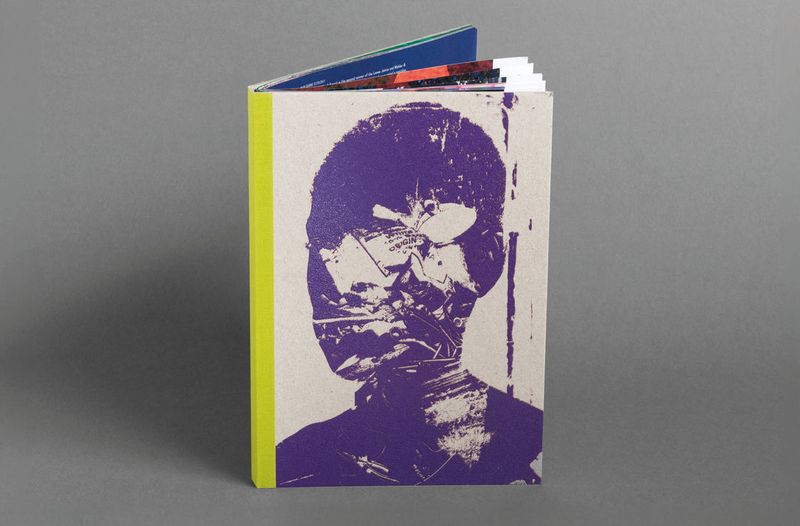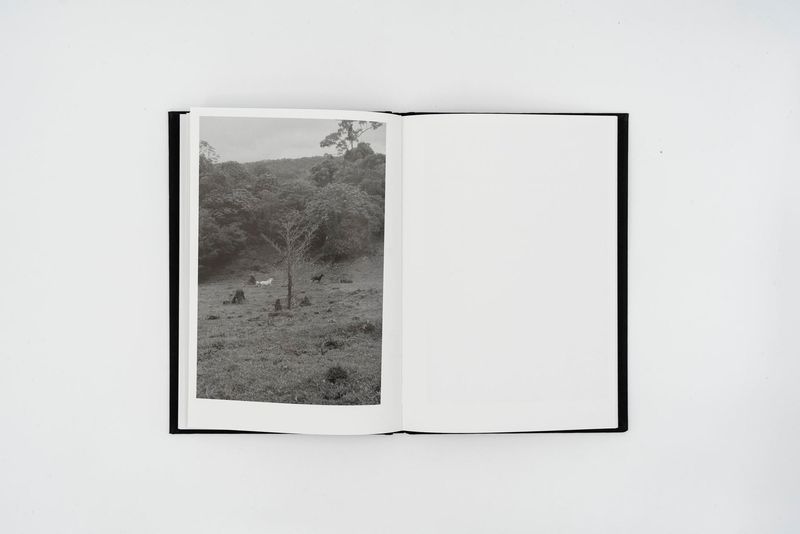An Incomplete Guide To Photobook-Making
-
Published17 Jun 2025
-
Author
With the PhMuseum 2025 Photobook Award currently accepting submissions, Max Pinckers, Karla Hiraldo Voleau, Yumi Goto, Allan Salas and Ngadi Smart share insights on their personal approach and perspectives on publishing.
This article is realised in collaboration with MPB, Europe’s top camera reseller and main partner of the PhMuseum 2025 Photobook Award. Through this first edition of the open call, one project will be selected to be published as a photobook curated by PhMuseum, who will cover production and distribution costs. In collaboration with PhMuseum, MPB will also identify an author for their Special Mention, granting a €800 voucher to spend on used photo and video gear on mpb.com.
The process of making a photobook can often feel like a hard-to-decode, enclosed practice. Looking at a finished volume, one finds an object that seems almost magical in how it functions, an interplay of multiple factors that aren’t easy to dissect. This is maybe what makes the photobook conversation almost inexhaustible - every author, publisher, or book-maker has their own methodologies, thoughts, and small fixations, making their process unique.
As the PhMuseum 2025 Photobook Award deadline set for 26 January approaches, we reached out to members of the jury – Max Pinckers, Karla Hiraldo Voleau, and Yumi Goto – plus artists from our community Allan Salas and Ngadi Smart to ask about their practice. With their experience spanning image-making, book production and distribution, each of them provided us with a different perspective on publishing. Yet, they all pointed in one shared direction: recognizing the photobook as a primary vessel for concepts and stories, capable of transcending barriers and turning immaterial ideas into cherished objects we can hold.
“The book provides structure, asks to be read, is lived with, sometimes borrowed but always returned” says Max Pinckers on the construction of a narrative device
Max Pinckers’ photographic production has always been tightly connected to the photobook medium: from The Fourth Wall (2012) to State of Emergency (2024), nearly all his projects have been self-published, each a distinct volume with its material specificities. “I approach the book as a tapestry woven with images, texts, and found materials that together show and tell a story about photography and people. The book provides structure, asks to be read, is lived with, sometimes borrowed but always returned, and the printed images inside of it can be touched” he says.
Going through Margins of Excess (2018), a book that confronts the conflict between personal imagination and societal truths, we look at a layered yet seamless design. “Graphic designer Rudy Latoir and I worked with different papers, each carrying their meaning. The main body of the book is printed on Munken Arctic Volume White 115 g/m2, a coated paper that feels uncoated and wants to be caressed; all the news clippings are printed on Clairfontaine Trophée ‘Pearl Grey’ 80 g/m2, in reference to the newspaper and the dullness of “the accountant’s truth” (as Werner Herzog put it); while the protagonists’ statements are printed on Coloraction Atoll 80 g/m2, the closest we could get to cosmic latte, the average color of all the galaxies in the universe”. Binding, he explains, is yet “the real subtle intervention: the newspaper sources are not bound along with the other bodies, but glued as superficial sources — like flies stuck to a wall — as external opinions not to be fully considered.”
This intentional, meticulous approach also belongs to Pinckers’ image-making process. “My methodology is a result of working with a Mamiya RB67 medium format camera and artificial lighting. I’ve been developing this workflow for over a decade into a personal way of seeing. In other projects, the camera is very closely related to the concept and intent of the work, critically reflecting on photography itself. In 2017, Dries Depoorter and I created Trophy Camera, an AI-powered camera trained by World Press Photo’s images to produce only award-winning pictures. More recently, for A Sore Calamity with Victoria Gonzalez-Figueras, we used a Kodak Brownie from the early 1900s inspired by Mark Twain’s pamphlet King Leopold’s Soliloquy, where the camera is confronted as a colonial tool."
Choices can at times be extremely practical, too – so is Margins of Excess’ softcover. “We designed it this way not only for it to feel less pretentious, but because otherwise Darius McCollum – one of the book’s six protagonists - would not have been allowed to receive his copies, as hardcovers are forbidden in Rikers Island prison.”
“A book is a living medium with a mystical power” adds Yumi Goto commenting on a search for deep transformation through publishing
Yumi Goto’s first encounter with photography was an epiphany. “I met Jan Rosseel in The Hague in 2013 and discovered his Belgian Autumn. At that moment I understood that photobooks are not mere repositories of images, but living mediums that deepen and reconstruct the work itself. This changed the course of my life”. The subsequent year, they launched the Photobook As Object workshop together. “Looking back on this decade-long journey, I can see why I remain captivated by photobooks. It is their mystical power to transcend linguistic barriers and weave dialogues across cultural divides. Photobooks exist as physical embodiments carrying layers of thought, emotion, and history, speaking to something fundamental about humanity through the interplay of visual and tactile experience”.
The Photobook As Object workshop is a powerful collaborative methodology that often leads to publishing. Throughout different stages, Goto works with the artists as an editor, publisher, and eventually distributor. She sees her role as that of a companion: “Many artists share a common struggle: losing sight of their work's ultimate form. Like walking a mountain path shrouded in mist, there are moments when the summit disappears from view. In such times, I become a guidepost walking alongside them. My mission is to share a comprehensive vision and provide the courage to move forward steadily, step by step.”
The spirit of the resulting photobooks is rooted in hand-made, heartfelt processes. “We carefully set print runs that resonate with the work, treasuring the devotion invested in each copy as the artist handles everything, from printing to binding. Materials that pursue only superficial beauty do not move me. What truly ignites my passion is designing books as sophisticated devices that invite readers into the deepest recesses of the work. These are not mere objects, but gateways.”
Looking at how publishing evolved since she first started, Goto states: “The most striking change has been the blurring of publishing boundaries. High-quality self-publishing has become possible, and the skeptical gaze once directed at small-scale publishing has transformed into respect. Diversity has become a reality rather than a mere ideal, with small publishers using their uniqueness as weapons to undertake bold and experimental endeavors. I am particularly moved to see works from individual and small publishers naturally taking their place among winners of prestigious awards. This phenomenon is no accident — it heralds the arrival of an era where creativity and innovation triumph over scale and capital. However, the era when anyone can become a publisher has simultaneously created market saturation. The act of publishing itself may be losing the special meaning it once held. Still, I am convinced: no matter how worldly currents may change, photobooks will maintain their immutable value as the finest vessels for visual storytelling. And it is upon this belief that I continue my creative work.”
“Captions, handwritten notes, or text message screenshots are there to create a deeper link” says Karla Hiraldo Voleau on the importance of engaging the reader and showing vulnerability
Karla Hiraldo Voleau’s two books – Hola Mi Amol (SPBH/ECAL, 2019) and Another Love Story (Mörel, 2023) – feel like spontaneous gestures. They seem to be directly emerging from her everyday life, floating somewhere between intimacy and performance. She indeed describes her way of creating books as “instinctive and fast — somehow following the same pace of making the project itself”. There is a continuous flow that goes from taking pictures, writing text, designing exhibitions, and releasing publications. “In the case of Another Love Story, the challenge was to adapt an already existing design: the exhibition installation. The book follows the show’s logic. I didn’t reinvent a visual language — I translated, or maybe retransmitted it.”
Writing is essential to the structure and essence of her photobooks. “Captions, handwritten notes, or text message screenshots are there to create a deeper link between the reader and the series. They add vulnerability and humor. When handwritten, they are the most analog, personal, and maybe more honest form of storytelling. The way I use text is not explanatory, but relational. It also helps break the fourth wall, which I love.”
In sequencing lies another crucial step. “I usually print everything out and work on the edit in one go. It’s all about the rhythm, and for that, there is no secret – it is so subjective, and depends on experience. I usually don’t dwell on details or on layouts forever — the form should simply be an extension of the content. Since my projects already have strong narratives or a protocol, the graphic design and layout just follow up organically.”
The concept and narrative are always Hiraldo Voleau’s major drivers. Under this perspective, many other aspects become much less important: one is the specificity of photographic gear. “In Hola Mi Amol there are a bunch of different cameras, from the analog DSLR’s to two different types of phones, a GoPro and spyglasses cameras. They were all chosen organically and used in different situations as an extension of my performance in the Dominican Republic. Another Love Story instead mostly consists of phone imagery. I think a photograph is defined by intention, not by the device. Whether it’s made with a phone, a webcam, a scanner, or a 19th-century process, what matters is the gaze behind it, the context it lives in, and what it triggers in the viewer. Yet, asking these questions keeps the conversation alive: what makes a photograph today? Is a 3D render a photograph? A screenshot from an online game, an ID photo booth picture, just data – are they photographs? I don’t think these lines should be fixed. I’m not interested in purity or hierarchy. Again, if the tool serves the story, it’s valid.”
“I wish the art of photobook publishing was more of a commodity on the African continent” comments Ngadi Smart reflecting on the importance of encouraging a more balanced access to the medium
Initiated through a commission by the British Journal of Photography and Wateraid in 2021, Wata Na Life is a collage-based project focusing on water poverty and the effects of climate change in Sierra Leone, Ngadi Smart’s country of origin. Thanks to the 2023 Publishing Ecology Award, carried jointly by publishing house Loose Joints and Mahler & LeWitt Studios, Smart was able to attend a residency in Spoleto to extend and publish her work. “Since the series was in a digital collage format, I chose to work with traditional collage methods during the residency. The months of shooting and editing in 2021 were so intense that it was just really nice to reconnect with the series and slow down. I wanted to see how it could develop under a different strategy and pace.”
Her book is a fruitful example of collaboration as a very effective tool to make ideas and skills converge. “Lewis and Sarah from Loose Joints are very hands-on and extremely talented at what they do. During the residency, they encouraged me to focus on landscapes as the series already contained many portraits. This freed me and led me to work in a more abstract way. Their editing and sequencing proposal just felt right – it was not a strenuous process at all, everything just seemed to flow well.”
Wata Na Life resulted in a post-folded, hand-made book, stab-stitched to a raw hardcover. “The dummy they showed me was quite experimental. It would essentially allow the reader to open up folded pages, revealing full images through this physical act. Lewis said this was quite rare for a hardcover book, and I felt the idea was mirroring my process in collaging. The cover, a raw textured silkscreen of Abubakarr Kamara, one of the youths I photographed in Freetown's East End, blew me away. I never told Lewis and Sarah this – they instantly picked purple as the main cover color, which was my grandmother's favorite color. She was always a main driving influence in my connection to Sierra Leone.”
Producing work that is rooted in the continent is of great importance to Smart. “For a long time, the African photobook panorama has been saturated with photography from a European gaze, at times rife with Colonial stereotypes. I wish the art of photobook publishing was more of a commodity on the African continent, as opposed to being mostly generated in the West.” One reason why publishing felt like the next logical step to Smart was the idea of it as a “tool to generate funding for the communities photographed – which happened through a print sale that accompanied the book’s release”. You can learn more and contribute at this link.
As for gear "I used a few cameras: a Canon EOS 5D Mark IV, another Canon Rebel, and multiple lenses. I also shot with analog film, using a Canon AE-1 Program and a Polaroid. I love the textures and colours analog gives me, but I also like the immediacy of digital, and the latter allowed me to shoot during the day but also go home in the evenings and start collaging straight away using my computer. The polaroids were really cool as they are so instant, and so very helpful as I would usually take 2 shots; one for me and another for the person I was photographing to keep. Some of the communities I visited were quite remote and it was important and felt right for me to give them an actual shot from the day to keep."
“Reaching the final sequence of the book was a long and disorienting journey, I must have gone through more than twenty different versions. It felt like building towers out of wooden blocks” shares Allan Salas on the process that led to his first publication
Speaking of his favorite book Valparaíso by Sergio Larraín, Allan Salas describes it as a pillar. “I remember my friends and I would take turns checking it out from the library because there was only one copy. It left a lasting impression on me – one that's still hard to fully put into words.” To this date, Salas’ relationship with photobooks maintains this profound, almost embodied essence.
After participating in PhMuseum’s Online Photobook-Making Masterclass FOLIO and publishing The Rooted Heart Began to Change with Witty Books in 2022, Salas is now in the process of releasing his second book, Thorns, with Nube, the publishing house he recently founded in Costa Rica. “The Rooted Heart Began to Change was born from an almost physical need to make existential anguish and profound grief visible. The images came like fragments surfacing from a place I didn’t fully understand. I remember that reaching the final sequence of the book was a long and disorienting journey, I must have gone through more than twenty different versions. It felt like building towers out of wooden blocks. To see the book now is to look into a mirror that only reflects the past. I am no longer that person, but there’s something deeply beautiful in that distance. While The Rooted Heart Began to Change emerged from a place of raw emotional survival, Thorns comes instead from a more reflective space. It’s less about the rupture and more about what survives.”
The shift took place in his image-making strategy as well. “For The Rooted Heart Began to Change, I used the only camera I had available. It was a very small digital camera, light and unobtrusive. Its fixed lens shaped the way I worked because I had no choice but to respond to the world through it. For Thorns, I finally upgraded my equipment and bought a medium-format camera which allowed me to approach the images with clearer intention and precision. The first book demanded adaptability; the second invited more deliberate control.” The same evolution affected his design of the book. “While The Rooted Heart Began to Change had a more straightforward format, Thorns experiments with materiality and structure, transcending the individual conceptualization of the images and merging them into a whole with the book’s physical form. Papers, textures, and printing techniques work together to create a tactile experience. It’s a book that asks to be experienced slowly.”
Thorns also comes with a broader engagement in publishing. “Together with two close friends, Cristian and Esteban, we finally left our other jobs to fully dedicate ourselves to Nube. One of our core motivations is to help create an ecosystem where author-driven projects can materialize. Costa Rica’s photographic landscape is limited and opportunities are scarce. Too often, images are treated as disposable, or shaped by narratives that don’t reflect our realities. With Nube, we want to resist that. The day-to-day is intense — legal challenges, production hurdles, creative decisions. No one prepared us for how complex this would be. Creating Nube means understanding the limitations of our context and turning them into reasons to keep going. At the end of the day, it’s about expanding, collaborating, and contributing to the larger photobook ecosystem that has brought us so many meaningful connections and inspiration.”
Why a book? Practical tips for artists working on their first photobook
Allan Salas: “One of the most important questions to ask yourself is: why a book? What does this format offer to the work that others don’t? Not every project needs to become a book, and understanding what the book form can bring to your images is essential. Try to let the project guide you. Each book has its own rhythm, and learning to listen to that takes time. The most resonant books are often the ones that grow quietly and intentionally, where form, content, and intuition align in a way that feels honest. Stay critical. Sometimes we form emotional bonds with images early on, and those attachments can be hard to break. But with time, you might find that certain photographs no longer serve the sequence. That doesn’t mean they’re not meaningful; it just means they might live better elsewhere”.
Karla Hiraldo Voleau: “There’s no single way to make a photobook, but in my opinion, the only mistake is starting from the form instead of the idea. If the concept is solid, the shape will come naturally. Also don’t ask too many people for their opinions as this can be confusing - I would choose a couple of mentors following the whole process, but mostly, stick to my guts. Move fast, and let the book take form in the momentum of the process!”
Yumi Goto: “Hold a comprehensive vision in your heart while having the courage to walk through the beautiful labyrinth of trial and error. The pitfall many creators fall into is continuing to envision perfect finished products only in their minds and losing their way during the actual production process. Perfect blueprints do not exist. What matters is the strength to move forward while accepting imperfection”.
Ngadi Smart: “Everyone has their own journey, but I would say take your time to choose the right topic, something that's not already oversaturated everywhere, something that hasn't been done, and that will stand out. Take your time in the production of the book, too. Have others you trust to look at your sequence objectively, helping you go beyond your attachment to certain images”.
Photobooks that stay with you: a list of cherished titles
Malick Sidibé and Seydou Keïta and J. D. 'Okhai Ojeikere, selected by Ngadi Smart
“When I started shooting (and to this day), anything by Malick Sidibé greatly inspired me, and I think subconsciously influenced me to photograph more on the continent. It just made sense. I also loved Seydou Keïta and J. D. 'Okhai Ojeikere's way of capturing African hairstyles in "J.D.'Okhai Ojeikere: Photographs."
Belgian Autumn by Jan Rosseel's, selected by Yumi Goto
“It remains like a North Star shining in the depths of my heart. This graduation project transcended mere academic achievement to become soul-stirring work. The technique of skillfully blurring the boundaries between fiction and non-fiction while highlighting the fragility and uncertainty of memory became an indispensable element in my photobook-making philosophy."
Valparaiso by Sergio Larraín, selected by Allan Salas
“Even though it was first published in 1991, the photographs were made decades earlier, and the soul of many of the images is timeless. Valparaíso was the first book I ever obsessed over. The images felt spontaneous and deeply poetic, and the way the book weaves together photographs, drawings, and text left a lasting impression on me — one that's still hard to fully put into words."
Set-Put-Run by Jaya Pelupessy, selected by Karla Hiraldo Voleau
“It blew my mind when I discovered it 10 years ago. It was so sarcastically conceptual, graphic, funny, experimental, and analog. It was the first time I encountered this type of meta-project where you’re playing with the behind-the-scenes, showing the process as part of the work itself. I think he blends a digital mind with analog hands beautifully.”
Poppy: Trail of Afghan Heroin by Robert Knoth & Antoinette de Jong, selected by Max Pinckers
“Published in 2012, it is a book that weaves a complex narrative in an elegant and visually powerful way.”
--------------
About MPB
For over 10 years, MPB has made used photo and video gear more accessible. With experts in Berlin checking and individually photographing every item, MPB offers camera equipment you can trust, with a free twelve-month guarantee for added peace of mind.
More than half of us have a camera at home we’re not using. Find out exactly how much your kit is worth with a free instant quote from MPB. Take advantage of free, insured shopping to send in your gear, and get paid directly into your bank account.
As part of their engagement in the publishing discourse, MPB released the YouTube guide "How to Publish a Photo Book", where artist Ian Howorth and publisher Keith Cullen (Setanta Books) share five takeaways for artists aiming to publish their first book.


